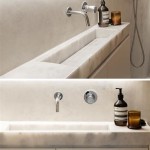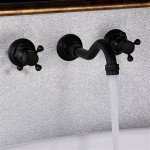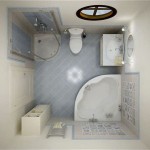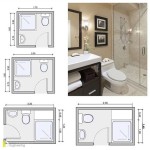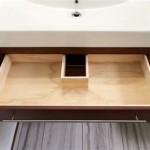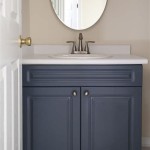How To Plumb a Bathroom Using PEX
PEX (cross-linked polyethylene) piping offers a flexible and durable alternative to traditional copper piping for bathroom plumbing. Its resistance to corrosion, ease of installation, and cost-effectiveness make it an increasingly popular choice for both professionals and DIY enthusiasts. This guide provides a comprehensive overview of plumbing a bathroom using PEX.
Planning and Preparation: Before beginning any plumbing work, a thorough plan is essential. This includes determining the locations of all fixtures (sink, toilet, shower/tub), measuring pipe lengths, and creating a diagram of the plumbing layout. This diagram should include the location of the main water supply line and the drain lines. Local building codes should be consulted to ensure compliance with all regulations regarding plumbing installations.
Gathering Necessary Materials and Tools: Once the plan is finalized, the next step is to gather the necessary materials. These include PEX tubing, PEX fittings (couplings, elbows, tees, etc.), a PEX crimping tool, a pipe cutter or scissors designed for PEX, and measuring tape. Manifold systems, while optional, offer a more organized approach to distributing water and are highly recommended. Other materials may include mounting brackets, pipe insulation, and Teflon tape.
Shutting Off the Water Supply: Before starting any plumbing work, it is crucial to shut off the main water supply to the bathroom. This prevents accidental flooding and ensures a safe working environment. Locate the main water shut-off valve for the house or apartment and turn it off completely. Open any faucets in the bathroom to drain any remaining water in the pipes.
Installing the Manifold System (Recommended): A PEX manifold system simplifies the process by creating a central distribution point for both hot and cold water lines. The manifold typically mounts on a wall and connects to the main water supply. Individual PEX lines then run from the manifold to each fixture. This eliminates the need for numerous soldered joints and allows for easier maintenance and future modifications.
Running the PEX Lines: Whether using a manifold system or running individual lines directly from the water supply, PEX's flexibility simplifies the process. The tubing can be easily bent around corners and obstacles, minimizing the need for fittings. Secure the PEX lines to wall studs or joists using mounting clips or straps to prevent sagging or movement. Maintain a consistent slope to ensure proper drainage, particularly for drain lines.
Connecting the PEX Tubing: PEX offers several connection methods, including crimp connections, clamp connections, and push-fit connections. Crimp connections are the most common and generally considered the most reliable. This method involves using a specialized crimping tool to compress a copper ring around the PEX tubing and fitting, creating a secure, watertight seal. Ensure the correct size crimp rings and tool are used for the specific PEX tubing diameter.
Connecting Fixtures: Once the PEX lines are run and connected, the next step is to connect the bathroom fixtures. This typically involves using appropriate adapters to connect the PEX tubing to the fixture's inlet and outlet connections. Apply Teflon tape to threaded connections to ensure a watertight seal. Carefully follow the manufacturer's instructions for each fixture installation.
Testing the System: After all connections are made, it's essential to thoroughly test the system for leaks. Turn the main water supply back on slowly and carefully inspect all connections for any signs of dripping or leakage. Check both the hot and cold water lines. If any leaks are detected, turn the water supply back off and tighten or repair the affected connection. A pressure test can be performed using a pressure gauge to ensure the system can handle the expected water pressure.
Insulating the Pipes: Insulating the PEX pipes helps prevent heat loss in hot water lines and condensation in cold water lines. Pipe insulation is available in various materials, such as foam or fiberglass, and can be easily slipped over the PEX tubing. This can increase energy efficiency and prevent potential damage caused by condensation.
Final Inspection and Considerations: Once the system is fully tested and insulated, a final inspection is recommended. This is to ensure all connections are secure and that the system meets all local building codes. While PEX offers numerous advantages, understanding the different connection methods and using the correct tools are critical for a successful installation. Consulting with a licensed plumber is always recommended for complex installations or if any uncertainties arise during the process.

How To Install Pex And Abs In A Bathroom Diy Plumbing Rework

How To Finish A Basement Bathroom Pex Plumbing

Three Designs For Pex Plumbing Systems Fine Homebuilding

Pex Plumbing Disadvantages What You Need To Know

Plumber Tips Everything You Need To Know About Pex Piping Granbury Tx Benjamin Franklin Plumbing

Pin On Master Bath

Master Bathroom Remodel Part 3 Prep For Shower Simply Designing With Ashley
Pex On Shower Tub Rough In Diy Home Improvement Forum

Pin By Cjfev On Diy Plumbing In 2024 Shower Heating And

Plumbing In The Walls
Related Posts
